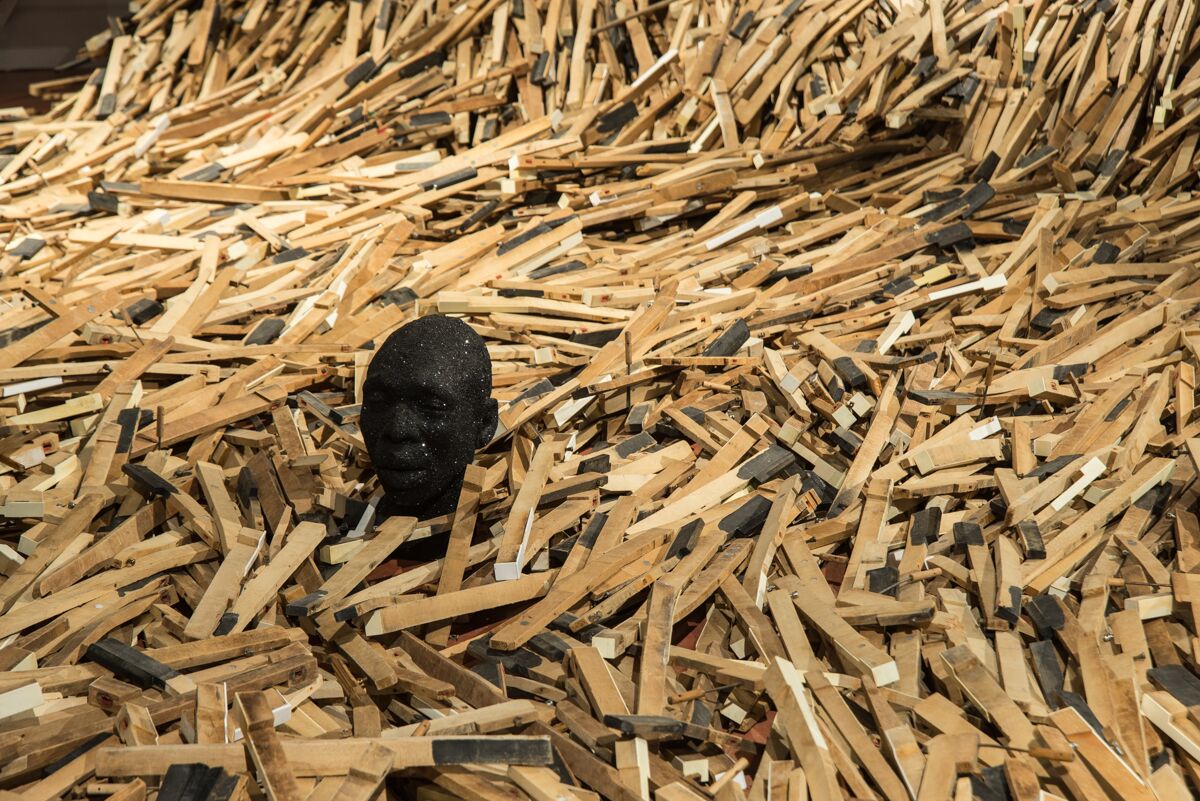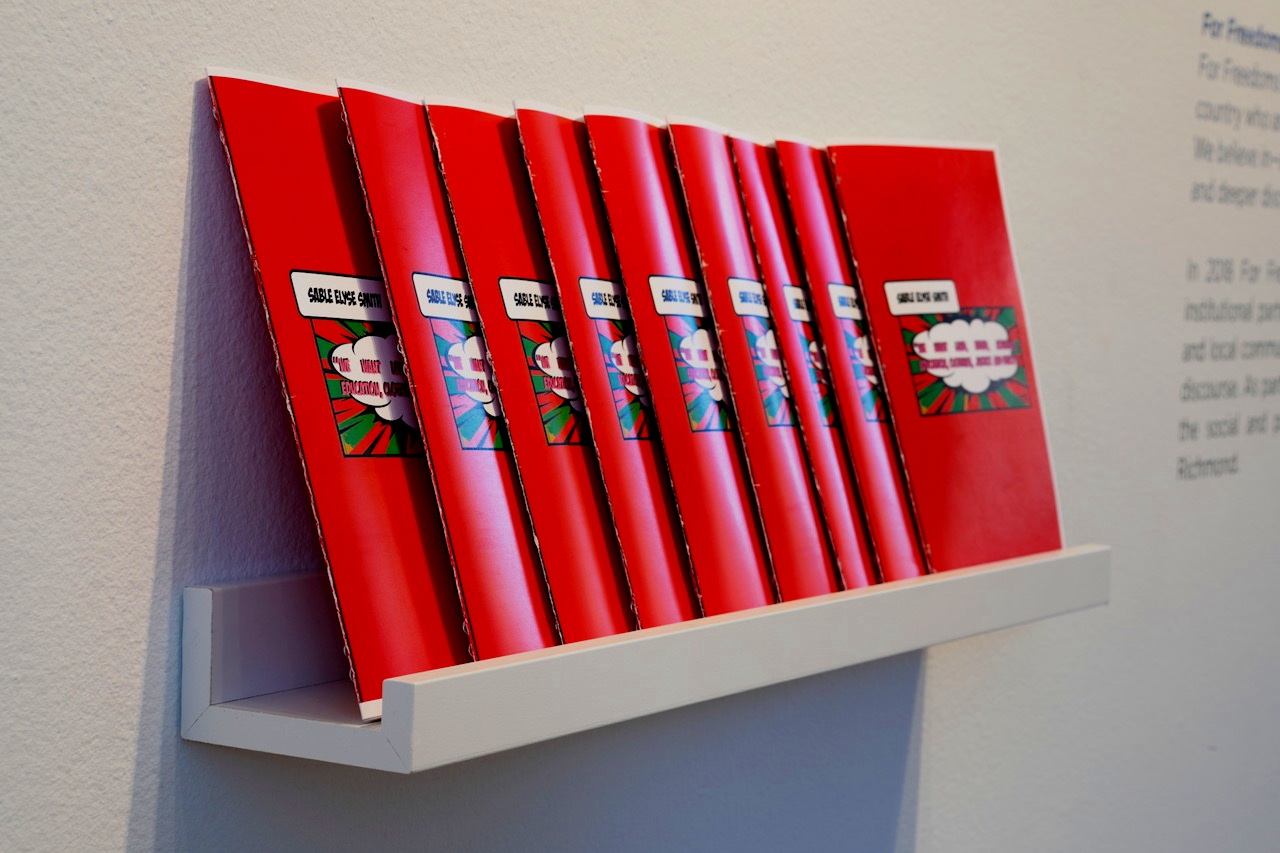LookCLOSE: Esotericism Then and Now

by Amy Ritchie Johnson | November 27, 2017
A photograph, like time, and you and me, depends on the sun. Light. In the case of Willie Anne Wright’s most recent body of work, Channelling the Tarot, the usual camera is relinquished altogether. The images are photograms called lumen prints. Willie Anne made them outdoors, mostly in the more stringent light of midsummer. She placed Brugmansia blooms and tarot cards on photo paper and exposed them to the sun, often for several hours. The paper was later fixed chemically in her home darkroom. The palette of purples, roses, golds, and ambers are an uncontrolled product of the sun interacting for various lengths of time with the light-sensitive paper. Of the outcome, Willie Anne says “Light alone commits the composition, as a phantom self, to be a permanent record of a transitory event.” But she humbly staves off the credit of creation. Truly she is the magician, known symbolically to those that have affinity for such things as a channel between the spirit world and humanity; an alchemist, transmuting the four elements to create new forms. Like the analog photographer, herself.
Willie Anne Wright, "The Magician" from Channeling the Tarot, 2016. Lumen print. Image courtesy of the artist and Candela Gallery, Richmond.
When I visited Willie Anne on the last day of August, a large Brugmansia plant bloomed slightly in her walled backyard. We sat at the round table in her kitchen as I moved the lumen prints, each one a unique object, from archival box to table back to box again. Our conversation flowed; how Willie Anne studied psychology for her undergraduate degree, especially Jung and the symbolic gestures of dreams shared by all humans. She went on to study painting in graduate school, where she honed the powerful sense of composition found in her photographs from Civil War Redux to Southland and Women in White.
It was 1972 when she shifted to lensless photography, discovering the pinhole process via Dale Quarterman at Virginia Commonwealth University who came by way of University of Georgia. At the time, the classic Rider-Waite tarot deck was making a popular comeback. Just in the last few years, Willie Anne ventured onto Google to research who illustrated that persevering set of cards. That’s when she discovered and became enamored with Pamela Coleman Smith. Finding a similitude between the images on Smith’s cards and the Brugmansia blooms of which Willie Anne had already been making photograms, a new body of work began, subtitled An Homage to Pamela Coleman Smith.
Willie Anne Wright, "The Lovers" from Channeling the Tarot, 2016. Lumen print. Image courtesy of the artist and Candela Gallery, Richmond.
Smith, aka Pixie, was born, like Willie Anne’s parents (the lovers), and photography itself, in the Victorian era (1837-1901). Smith ran with the European symbolist, occultist crowd of her young adulthood, along with William Butler Yeats, participating in the various and vying hermetic orders. This may sound hokey in the early 21st century, but at the time, modern art, and abstract art in particular, was being formed out of the Spiritualist and mystical movements of the turn of that century, including artists like Ezra Pound, Vasily Kandinsky, and Hilma af Klint. (Note the recent Guggenheim exhibition Mystical Symbolism: The Salon de la Rose+Croix Paris, 1892-1897.) Smith, a visual artist and writer, was an avant-garde high priestess.
In 1907, Alfred Stieglitz, the photography hierophant of his time, began exhibiting Smith’s synesthetic paintings at his historic Little Galleries of the Photo-Secession, or 291—the first paintings he would show at the till-then photography-centric gallery. Her paintings would be exhibited at 291 twice again in the next two consecutive years, when in 1909 she was commissioned by A. E. Waite, an adherent to one of the offshoot Golden Dawn mystical orders, to illustrate a new deck of tarot cards. Smith wrote about her work on the project in letters to Stieglitz. By the time Willie Anne Wright was born, in 1924, Smith had removed herself to a small town in England and converted to the most mystical of the conventional Christian religions, Catholicism—a belief culture in which I was brought up to recognize the Communion bread and wine as the actual body and blood of Christ, not symbols. So Smith’s leap from hermetic orders, synesthetic painting and tarot to establishing a vacation home for Catholic priests is conceivable.
Willie Anne Wright, "The High Priestess" from Channeling the Tarot, 2016. Lumen print. Image courtesy of the artist and Candela Gallery, Richmond.
Willie Anne Wright, "The Hierophant" from Channeling the Tarot, 2016. Lumen print. Image courtesy of the artist and Candela Gallery, Richmond.
The Rider-Waite-Smith tarot shows up earlier throughout Willie Anne’s photographic work. From 1982, the year I received my First Confession at St. Benedict’s Church, several short city blocks from Willie Anne’s home, a color cibachrome print shows an image of the Virgin Mary, The Sun and The Star tarot cards, and a Rubix Cube among some bones, shells, and a winged Pegasus in one fantastic still-life.
Willie Anne Wright, Still Life-Rubix Cube Set Up, 1982. Cibachrome pinhole photograph. Image courtesy of the artist and Candela Gallery, Richmond.
In 2001, as part of her Tableaux series, Willie Anne made a pinhole photograph of four bodiless Victorian women at a round table playing tarot like gin rummy. Tellingly she says of that series, “I capture the aura of the departed by using a pinhole camera to photograph the garments left behind. These intimate possessions, which enveloped the living body, are used to create tableaux that recall the activities of former lives.” I had just held this image in my hands, eyeing the year “2001” penciled in the artist’s own hand along the bottom edge, when soon after I came upon the print of The Tower card and winced. Being an American and having lived in New York City on September 11, 2001, I am suddenly conveyed through space and time by symbolism, my mind making connections between seemingly disparate elements, incorporating them into a whole.
Willie Anne Wright, "Caroline, Kate, and Friends Consult the Tarot,” from Tableaux, 2001. Sepia toned silver print from a pinhole negative. Image courtesy of the artist and Candela Gallery, Richmond.
Willie Anne Wright, "The Tower" from Channeling the Tarot, 2016. Lumen print. Image courtesy of the artist and Candela Gallery, Richmond.
In 2016, the year her monograph of the cibachrome work was published by Candela Books, and her 1965 painting, “One Night at Jimmy’s We Saw the Supremes on Color TV,” was hung in the Lewis Collection galleries at the Virginia Museum of Fine Arts, Willie Anne was turning back to the tarot. She has completed lumen prints of the entire major arcana and a few of the minor. She considers them a set of prints, much like the tarot is a set of cards.
When I first arrived at Willie Anne’s that day, having stood on the covered porch in front of a glass door concealed on the inside by a swath of white lace, my finger having just pressed and sounded a bell distinctly tinny and long gone from the contemporary ear, Willie Anne asked if she could take my picture with her new instant camera, a recent incarnation of the forsaken Polaroid. She seated me on the edge of a sofa, beneath a wall-engulfing painting, just inside the grasp of the afternoon sunlit window. The portrait, only a few inches by a few inches in size, went into a keepsake box on her coffee table where a collection of such portraits document visitors to her house. I felt recorded in the best of ways, having my likeness caught on film by this particular photographer, so influential in her own way to the arts of the South and a branching of photographers throughout Virginia and the Carolinas.
Her influence is deeply rooted but superficially overlooked, a quality of the hanged man, card 12 of the major arcana, which means, when I venture to look it up in Wirth’s “Tarot of the Magicians”—first published in Paris in 1927, when Willie Anne was three years old—“One must not be deceived of the apparent inactivity of the hanged man…though not moving with his muscles, he exerts an irresistible psychic influence, thanks to the subtle influence which emanates from him; his thought, his aspirations, and his feelings are felt from afar.” After reading this, I had the irrational impulse to consult Cleary’s “I Ching,” and turned to the corresponding hexagram, 12. It states clearly, “Ending obstruction, great people are fortunate, but tie themselves to a tree trunk lest they go to ruin.”
Willie Anne Wright, "The Hanged Man" from Channeling the Tarot, 2016. Lumen print. Image courtesy of the artist and Candela Gallery, Richmond.
Banner image: Willie Anne Wright, "The Sun and The Moon" from Channeling the Tarot, 2016. Lumen print. Image courtesy of the artist and Candela Gallery, Richmond.
Amy Ritchie Johnson is an independent art writer, curator, and educator. She also teaches creative writing. Follow her on Instagram at For-real Art Lover (@f.artlover).






